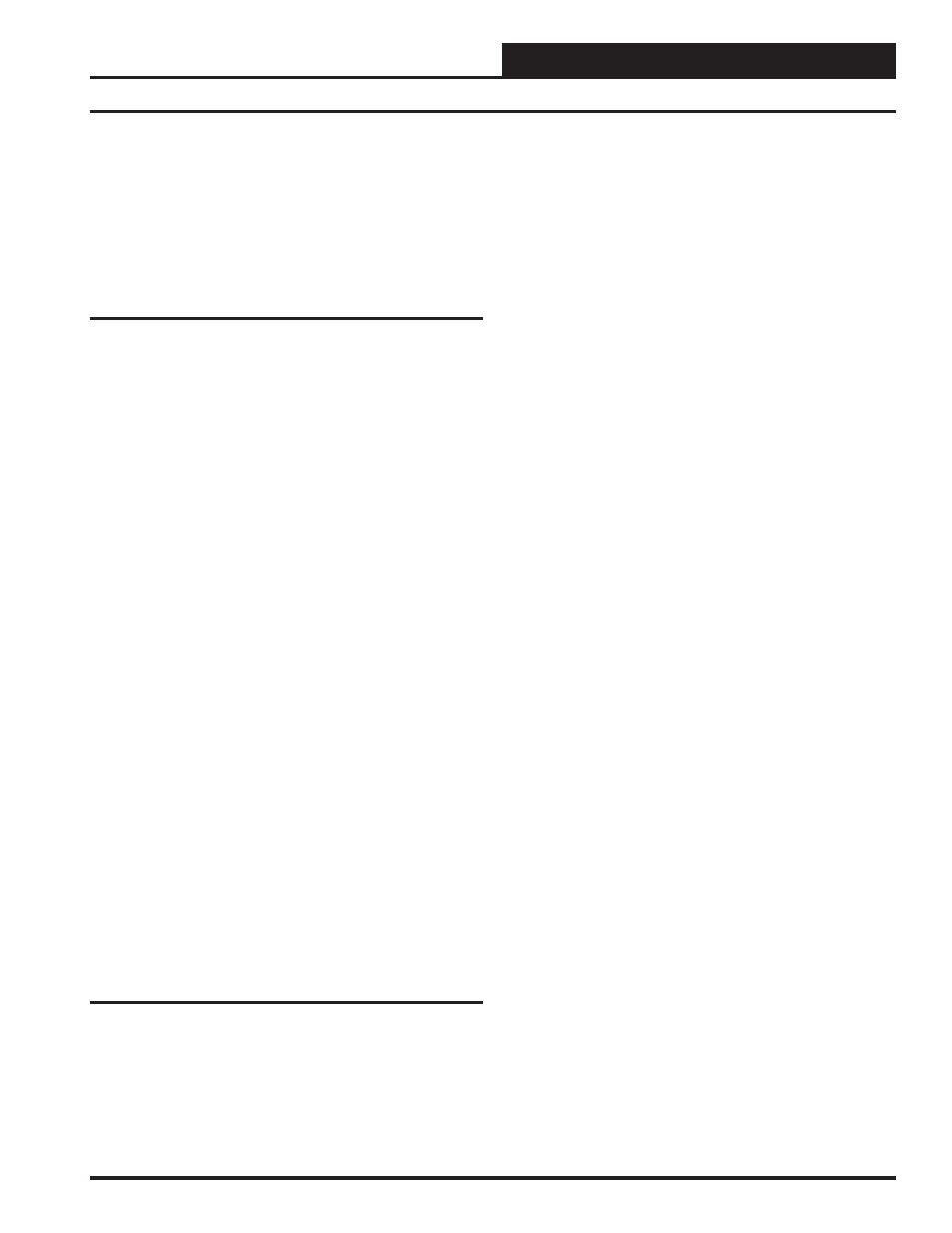Damper positions and occupied mode sequences, Sequence of operations – WattMaster WM-WCC3-TGD-01B User Manual
Page 827

Damper Positions and Occupied Mode Sequences
Space Heating Mode
This mode occurs when the Space Temperature falls below the Space
Heating Setpoint.
Off Mode (Not Displayed)
During unoccupied mode, the mode is considered ‘OFF’ if the space
temperature does not generate a heating mode or cooling mode based
on the unoccupied heating & cooling setpoints.
Damper Positions
The actual values for the minimum damper positions that are described
in the following paragraphs can be confi gured by changing the values in
the setpoint screens for the VAV/Zone Controller. These minimums are
expressed in damper open percentages for pressure dependent terminal
units or in CFM for pressure independent terminal units.
Cooling Minimum
When the HVAC unit is in the Supply Air Cooling mode but the space
does not require cooling, the VAV/Zone damper will move to the Cool-
ing Minimum position.
Heating Minimum
When the HVAC unit is in the Supply Air Heating mode but the space
does not require Heating, the VAV/Zone damper will move to the Heat-
ing Minimum position.
Vent Minimum
This is the position the VAV/Zone damper will move to when the HVAC
unit is in the Supply Air Vent mode.
Night Minimum
This is the position that the damper moves to during the Unoccupied
mode. When using non-fan powered terminal units, the VAV/Zone
damper will position itself in the Night Minimum position. In order for
fan powered terminal units to position the damper to the Night Minimum
position, the check for main fan status must be selected, and the HVAC
unit fan must be operating. If check for main status has not been selected,
the damper will be in the fully closed position.
Reheat Minimum
This is the position that the damper moves to when Reheat is initiated.
If the VAV/Zone Controller is used on a terminal unit that has reheat, the
VAV/Zone damper will move to the Reheat position whenever a Space
Heating demand occurs and the HVAC unit is in Supply Air Cooling
or Vent mode. When the HVAC unit is in Supply Air Heating mode,
the VAV/Zone damper will modulate as required to maintain the Space
Heating Setpoint.
Occupied Mode Sequences
Space Vent Mode
This mode only applies to the Occupied Mode of operation. If the
equipment is in the Unoccupied Mode, then a lack of heating or cooling
demand would generate the Off Mode.
If the HVAC unit is in Supply Air Vent Mode, you can adjust the damper
position on pressure dependent terminal units and the airfl ow on pressure
independent terminal units to provide a fi xed amount of ventilation air
into the space when there are no heating or cooling demands. During
this time, the damper does not modulate on pressure dependent terminal
units. On pressure independent terminal units, it only modulates to the
extent required to maintain the vent minimum airfl ow setting.
If the VAV/Zone Controller detects that the HVAC unit is in Supply
Air Heating mode, indicating that the air handler has activated its heat,
the heating airfl ow minimum will be substituted for the vent minimum
position.
If the VAV/Zone Controller detects that the HVAC unit is in Supply Air
Cooling mode, indicating that the air handler has activated its cooling,
the cooling airfl ow minimum will be substituted for the vent minimum
position.
.
Space Cooling Mode
Occupied Space Cooling mode is initiated by the temperature in the
space rising above the Occupied Cooling Setpoint.
If the HVAC unit is in the Supply Air Heating and another VAV/Zone
Controller has a cooling demand, the damper/airfl ow for the VAV/Zone
Controller requiring cooling will position itself to provide the heating
minimum setpoint amount of air into the space. No modulation open
will occur because the space does not want the warm air currently being
supplied by the air handler.
When the HVAC unit is in the Supply Air Cooling mode, the damper is
normally held at the minimum cooling position until the space tempera-
ture begins to rise above the cooling setpoint. As the space temperature
rises to within 0.5 ºF of the Occupied Cooling Setpoint, the damper/
airfl ow calculation causes the air valve to open proportionally until the
maximum setpoint is achieved at 1.5 ºF above the setpoint. This is a 2
ºF proportional window starting 0.5 ºF below the cooling setpoint to 1.5
ºF above the cooling setpoint.
The damper/airfl ow is never allowed to modulate outside the user-
adjusted minimum and maximum setpoints. The maximum damper/
airfl ow setpoint applies to heating and cooling modes of operation only.
All of the modes have their own individual minimum setting.
Series Flow Fan Terminals
If the VAV/Zone Controller has been confi gured as a Series Fan Powered
terminal unit, the series fan relay will activate and run the series box fan
continuously anytime the VAV/Zone controller is in occupied mode.
In all cases, before the series box fan can be activated, the air damper
is driven fully closed and held that way for 30 seconds to make sure
the series box fan hasn’t inadvertently started to spin backwards. Once
the series box fan starts, it waits an additional 10 seconds to allow the
fan to spin up before it starts to open the damper and introduce airfl ow
from the HVAC unit fan.
Parallel Flow Fan Terminals
During normal cooling or vent mode and adequate air supply, the paral-
lel fan will be off. During the occupied cooling or vent mode, the fan
will only activate if the damper/airfl ow is below a user-defi ned low
limit setting. This causes it to be used as a make-up air source. When
the damper/airfl ow rises 15% above the low limit setpoint, the fan will
be deactivated.
The check for main fan status setting has no effect on the Parallel Fan
box when in the occupied mode.
23
VAV/Zone Controller Actuator Package Technical Guide
Sequence of Operations